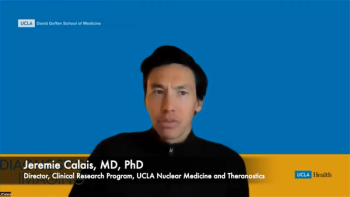
“Recover Wisely” Program Helps Groups Re-Claim Pre-Pandemic Imaging Volumes
The University of Cincinnati launched a 10-week program that led the department back to roughly 100-percent pre-COVID-19 levels.
Reclaiming pre-pandemic imaging volumes is possible if practices adopt data-driven, team-based approaches. Following such strategies will help providers “recover wisely,” according to research results published recently.
In a Aug. 10 article in
“Long-term COVID-19 recovery will require resilience and strategic planning. The post-COVID care will be different and will include a remote workforce, abbreviated imaging protocols, online registrations, and virtual waiting rooms,” they said. “Although the pandemic is an unprecedented crisis, it provides a unique opportunity for us to rethink our healthcare operations and create radically different care models for the ‘new normal.’”
For the past five months, radiology groups have been struggling with significant drops in their imaging volumes. Nationwide, volumes have plummeted by at least 50 percent, and in for some modalities, such as mammography, the free-fall has reached more than 90 percent.
Related Content:
To identify an effective way for practices to begin reclaiming their former imaging volume and financial footing, the team tested a strategy for re-launching non-emergent imaging, including tackling backlogs, in early May. Using the Standards for Quality Improvement Reporting Excellence 2.0 guidelines, they evaluated imaging volumes over 10 weeks from May 4, 2020, to July 10, 2020.
Administrators, radiologists, technologists, and schedulers made up a task force that collected imaging data by date, time-of-service, site-of-service, modality, and scanners used. They, then, used this information to create a recovery model. During the three-phase strategy, the practice followed these actions:
- Week 1: Prioritize backlog patient list.
- Week 2 & 3: Prioritize scheduling, develop a dashboard for reporting recovery progress, and re-open some facilities to help with the backlog.
- Week 4-to-Week 10: Return all facilities to normal operating hours, with two facilities offering extended hours. Resume screening exams and non-essential research efforts. Alert patients and referring physicians to available services.
As each site re-opened, the team explained, they kept tabs on the backlog and their available imaging resources. They were also careful to prioritize scans from all referring providers and specialties as equally as possible.
At the end of the 10-week program, the team reported their practice had recovered 102 percent of their overall outpatient imaging volume when compared to their average weekly pre-pandemic levels. In fact, nearly all modalities reached 100 percent of their initial imaging volume.
Overall, the team reported, practices can re-claim their pre-COVID-19 imaging levels, but it will require a new approach that takes the unique characteristics and circumstances of the pandemic into account.
“The COVID-19 crisis has called for a re-imagination of places, people, and strategies for healthcare organizations to prepare for the post-pandemic phase,” they said. “In this recovery process, we learned important lessons of effective, tailored communications, cross-disciplinary teamwork, and innovative solutions.”
Newsletter
Stay at the forefront of radiology with the Diagnostic Imaging newsletter, delivering the latest news, clinical insights, and imaging advancements for today’s radiologists.




























